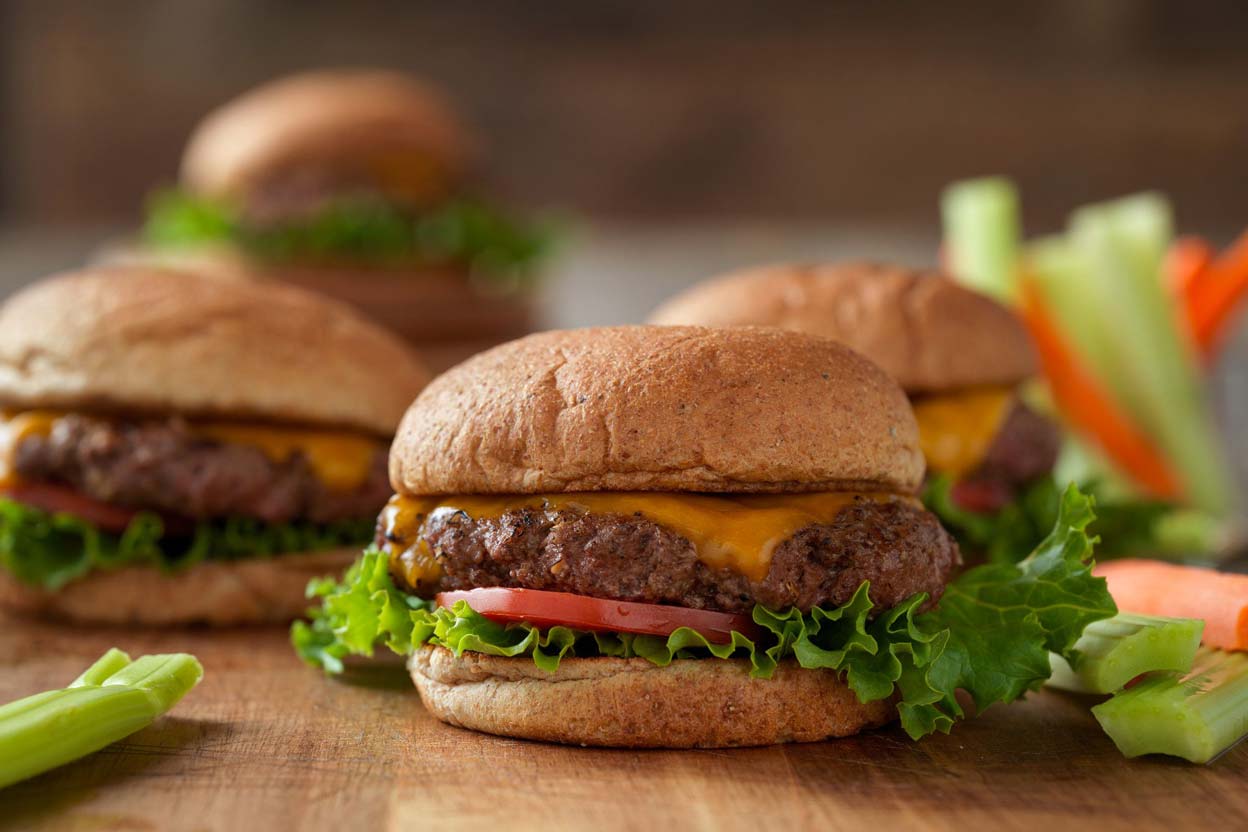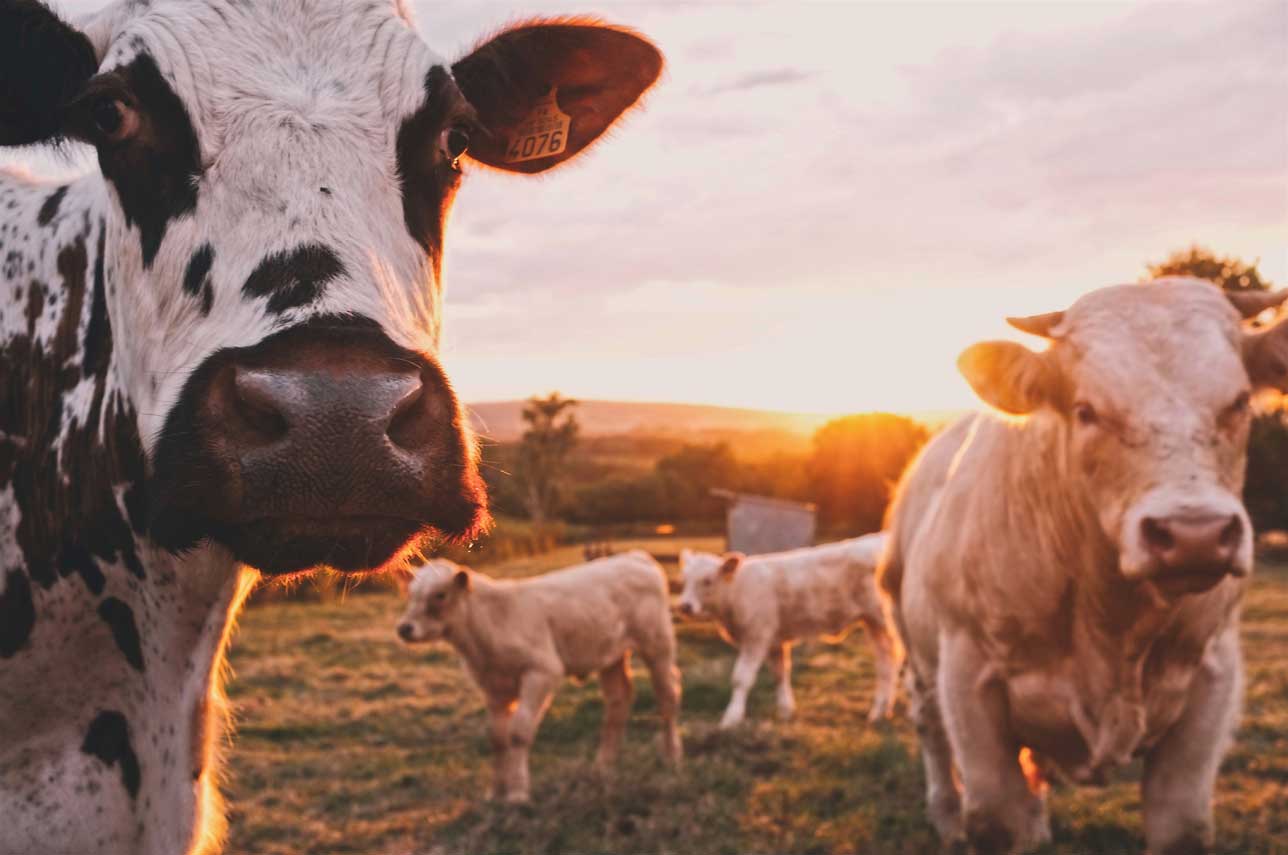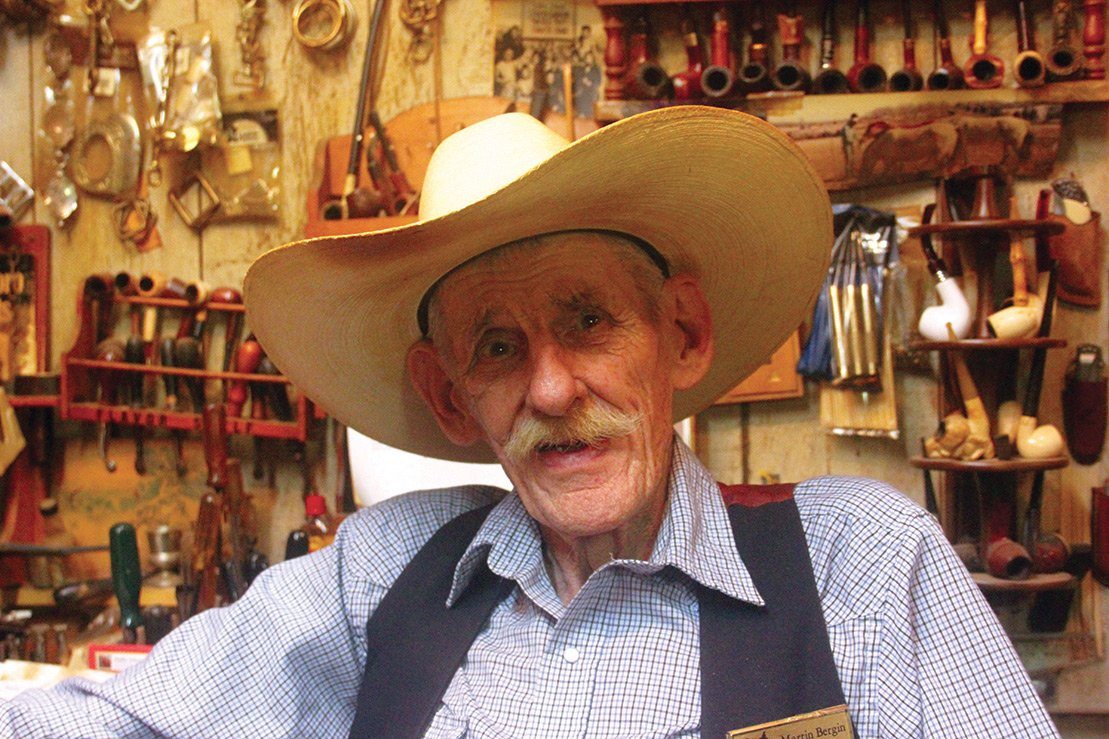Richie and Leah Camden have opened a Sled & Breakfast in Fenton. This is a sled dog-themed doggy daycare, boarding, and training facility with eight-foot fences, concrete borders along the edges of the fences, and multiple play yards! See the story below about their sled dogs. They haven’t raced since 2021, due to Leah’s pregnancy and the birth of their second son, Brady, followed by the opening of the Sled & Breakfast in Fenton. While the Camdens hope and plan to race again next winter, right now, the huskies work everyday with the Camdens, greeting customers and new dogs. This story first appeared in the January/February 2019 edition of Missouri Life.
Updated January 26, 2023
All is quiet in the predawn darkness of a Jefferson County neighborhood. Bundled up against the late-fall chill, Richie Camden deftly hitches up his team, a familiar routine he has followed for the past seven years. Collars, harnesses, and ganglines connect a group of prancing Siberian huskies, excited to begin their day. As the lines jingle, the dogs begin to howl their approval, the chorus rising as each chimes in with canine exuberance.
“Fortunately,” says Richie, “I have very understanding neighbors.”
Those understanding neighbors have learned to live with the early morning concertos in the training season of the Breakaway Siberians, a sled dog racing team in Missouri. The unlikely collection of teammates—assembled primarily with rescue dogs—is entering its eighth season on the mid-distance circuit. They haven’t won any races yet, but they, and their story, have captured the hearts of sled racing fans throughout the Midwest.
Richie Camden’s Passion has always been hockey. It was what drew the Affton native to Northern Michigan University in Marquette, where he earned a degree in digital cinema and played hockey as a club sport. He remained in Marquette after graduation in 2008 to work on an independent movie project while planning a move to California and a film career. Time to get a dog, he thought, so he traveled to Wisconsin to find Koivu, a Siberian husky puppy he named after Saku Koivu, longtime captain of the National Hockey League’s Montreal Canadiens.
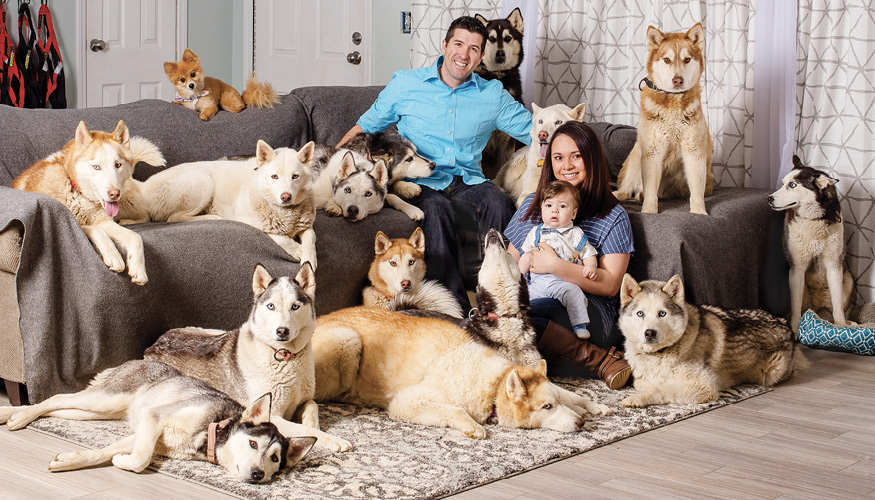
What Richie didn’t know about his new, blue-eyed best friend was what many new owners of Siberian huskies learn the hard way: they are not house dogs. Koivu was a handful, more destructive than the average puppy and full of boundless energy that took hours to run off. When the film editing work ended in Michigan, the two moved to Missouri, where Richie’s parents had recently settled in High Ridge. Richie started a construction job. The plan to make movies out West fell by the wayside.
“I couldn’t take him to California,” Richie says. “And I couldn’t leave him behind.”
Richie and Koivu were soon frolicking on the trails of eastern Missouri, Koivu running 5 to 10 miles a day as Richie rollerbladed alongside. One May day in 2010, they met a runaway husky trailing a broken leash in Queeny Park. Hoping to find the dog’s owner, Richie attached the two dogs as they played, grabbing the middle of the leash to control them. The pair began to pull Richie on his skates, giving him a ride around the trail—and the kernel of an idea.
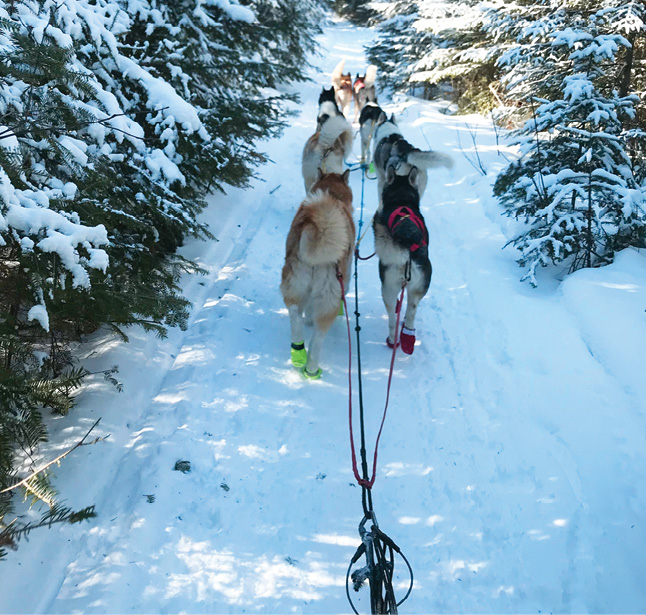
The Siberian husky is an ancient breed from northeast Asia, developed as a working dog by the Chukchi people. They arrived in North America in 1908, brought to Nome, Alaska, for sled racing. The dogs’ thick, double outer coat is well-suited to Arctic climes, as is their strength and endurance. Natural pack animals, huskies are friendly, outgoing, and loyal, and they get along well with other dogs. But they are high-energy dogs that love to run and pull things all day long. And that often gets them in trouble with owners who are ill-equipped to manage a dog with those tendencies.
“Siberians are probably not what folks in the lower 48 would consider ‘good house pets,’ ” says veterinarian Jim Leach, a Fulton native who has practiced in Alaska for decades. “They are a beautiful canine. And they certainly enjoy running and racing, but especially as youngsters, they tend to be high energy and high maintenance.”
Thus, despite being one of the most popular breeds in the country—further boosted by their roles in the HBO series Game of Thrones—Siberian huskies are showing up in animal shelters and rescue organizations in alarming numbers, abandoned by owners who didn’t sign up for the messes, the chewed furniture, and the other destruction wrought by a bored dog alone in a house
all day.
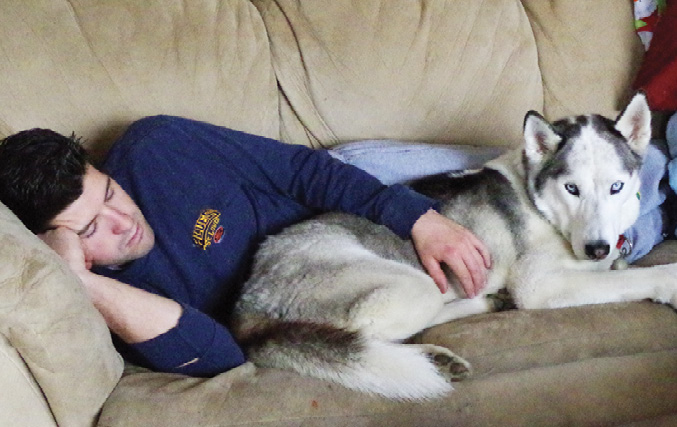
By the time Koivu was 2, Richie knew his dog needed more stimulation. He chucked the construction job and started studying to become a dog trainer. A new job at Happy Tails Canine Enrichment Center in St. Ann meant he could bring Koivu to work with him.
Richie noticed the prevalence of Siberian huskies in day care and heard the stories of husky owners surrendering their charges to rescue clubs. He also noticed Leah Dasal, a coworker at Happy Tails. With Leah, Richie shared a love of dogs and his dream of adopting rescued Siberians.
“He brought up a sled dog team on our first date,” Leah says. “I thought that was cool, like saying, ‘I’d like to climb Mount Everest.’ But I’ve since learned that when Richie puts his mind to something, he does it.”
Soon after, Richie adopted Fleury from Indy Homes for Huskies in Indianapolis. Leah’s sister, April, has a Siberian, and she brought Balto to play. Then came Spezza, an exuberant red husky, from the same Indiana rescue club, and Mandy, from Texas Husky Rescue. Within a year, Leah says, the couple had gone from one dog each—Richie’s Koivu and Leah’s Pomeranian, named Bebe—to five. “Richie would say, ‘I think I’ll get another dog,’ and off we’d go to adopt another,” Leah says. The team was coming together.
Training on area trails, the dogs pulled Richie on roller blades and then a go-kart. By early 2012, he thought the team—four Siberians plus a borrowed Gordon setter and Labrador retriever—was ready for the 90-mile Midnight Run in Marquette, Michigan.
“I’m known for this race, unfortunately,” Richie says.
The weekend kicked off with a ceremonial opening lap downtown. Dogs lined up excitedly for a staggered start at two-
minute intervals. Richie’s team followed 18 others out of the chute and was in no hurry to leave. The team strolled out and headed for the sidelines for hugs and pats from the cheering children.
“They just kept working the crowd,” Richie says. “Two teams passed us before we’d even gone a quarter mile.”
Race officials later took Richie aside and convinced the inexperienced musher that his team would be better off running the weekend’s shorter 30-mile route for its first sled race.
He winces at the memory. “We set a record for the slowest finish in the Jack Pine 30: five-plus hours. They call us ‘the Slowberians.’ ”
Undeterred, Richie adopted more rescued Siberians that year—Chara from Texas, Roenick from Tennessee, and Cookie from Illinois. As each dog joined the family, Richie and Leah worked to ease them into the team and a way of life Siberian huskies were meant to live.
“We’ve always said the dogs are ‘pets first and athletes second,’ ” Richie says. “Our ultimate goal has always been to give them a good home.”
Richie and Leah, who married in 2016, share their home on 5 acres near Hillsboro with their 1-year-old son Lucca and 15 Siberians—Koivu and his sister Mikko, April Dasal’s dog Balto, and 12 rescue dogs. All but three of the Camdens’ dogs are named after hockey players—the team name, Breakaway Siberians, derives from a hockey term and signifies the rescued Siberians “breaking away” to a new life.
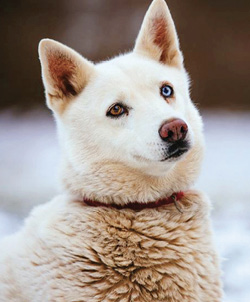
Baby Lucca does not have a hockey name.
“Leah put her foot down,” Richie says with a laugh. “No hockey names for the baby.”
As musher and dogs gained experience, the dogs’ competitive drive kicked in. Richie tracked mileage and speed for each dog. Leader Koivu was the most focused, reining in other teammates more easily distracted.
“The average pace is 7 to 8 miles per hour, and our top dogs run 10 to 13 miles per hour,” Richie says. “The fastest they’ve ever run is 19 miles per hour when a deer jumped out on the Katy Trail.”
Trail runs don’t always go as planned, he says. “I’ve been drug through the woods and bounced off of trees too many times to remember as the dogs will chase after a wild animal with absolutely no notice.”
And then there was the skunk incident. “There is nothing worse than being downwind of a freshly skunked team as the stench blows in your face for 10 miles back to the truck,” he says.
“The dogs love running in the snow. Sometimes they will run off the trail and leap through the deepest powder that comes up to their shoulders. They are like children running through it, so much happiness that I swear you can feel it pulse through the sled.”
That childlike wonder is key to the dogs’ good nature and calm demeanor, says their veterinarian, Susan Giraudo of Advantage Veterinary Center in High Ridge. “This is one of the wonderful things about what Richie does and why his dogs are so calm and have so few issues,” she says. “They are dogs doing what they are bred to do.”
Winter is the Siberians’ favorite time of year. The racing season runs December through March. When the volatile temperature swings of spring begin, the dogs grow restless.
“I dread every spring,” says Richie. “The weather changes are so dramatic here. At the end of winter, it can be 20-something degrees, and the team is in peak form doing 30- to 40-mile runs. Then it’s 70 degrees and humid. Either the runs stop altogether, or I have to cut their miles down to 4-mile runs.”
During this time, Richie says, the dogs find other ways to expel their energy. That’s when they get destructive or innovative, he says. Team leader Kaiya dug under the fence so she could run laps around the property, returning to the front door when she’s tired. The team also visits schools and church groups in the off-season, interacting with children as Richie gives motivational talks about teamwork and overcoming obstacles.
“There are moments when the trail is perfectly smooth and you can really take it all in. The dogs’ collars jingle to the rhythm of their breathing. The snow crunches softly beneath the sled and we glide through the woods together. It’s always an adventure and I feel like I learn something new about myself and the dogs each time we run.” —Richie Camden
“The dogs handle the heat fine,” Richie says. “Their coats shed and they are able to cool themselves like any other dog.” Summer playtime often takes place in an air-conditioned barn.
“Once summer is in full swing, they are usually pretty calm,” Richie says. “I guess they get all the craziness out during spring. They usually like to lay in the garage on the cold concrete floor or on our tile floors in the house.”
The Breakaway Siberians begin training for race season in mid-fall, when temperatures become more amenable to the huskies’ heavy coats. They start with early morning or late-night runs on trails around the neighborhood, working up to longer runs on the Katy Trail. The team has two sponsors: Alpine Outfitters of Bend, Oregon, takes care of the team’s equipment needs, and Missouri-based Diamond Pet Foods of Meta supplies the dog food, Diamond Naturals Chicken and Rice Formula, a 16 percent fat/26 percent protein mix. According to company nutritionists, sled dogs burn two to three times more calories during training; while running endurance events, their bodies use carbohydrates sparingly as fat provides an increased proportion of energy. The dogs eat the same diet in the off-season, but consume less food.
“Diamond Pet Foods loves to support local and state causes, and we believe that every pet deserves the very best,” says marketing director John Kampeter. “So when Richie Camden—someone who truly lives that belief—reached out to Diamond via Facebook in 2016, we were thrilled to help.”
The Breakaway Siberians have an ambitious race schedule this winter. Although the team is returning to Marquette for the Jack Pine 30, the elusive Midnight Run will have to wait until new lead dogs are more experienced, since Koivu has retired. A 2018 effort to finish the 90-mile race fizzled at 36 miles when Richie pulled out of the race rather than risk injury or a bad experience with the younger dogs.
“I was disappointed,” he recalls, “but Leah reminded me that we don’t run dogs to win races or even to finish races. We run dogs because they love to run and because we want to give them a good home and a happy life. Even if we don’t finish races, we still win.”
Visit the Sled and Breakfast website or on Facebook.
Top photo by Hannah Stonehouse
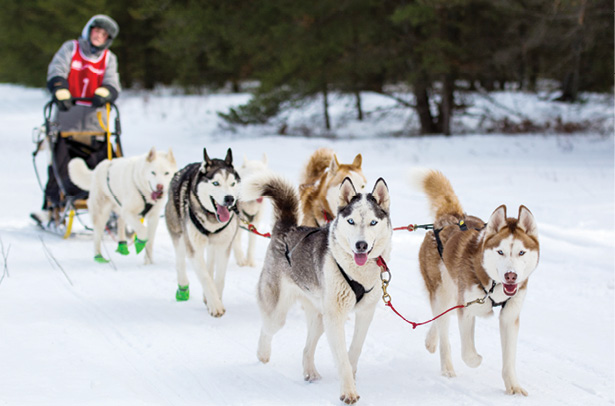
SLED DOG RACING
Sled Dog Racing is a popular winter sport in the northern reaches of the world. Teams of dogs, harnessed to a gangline, pull a sled over a marked snow-packed course in a timed competition. Dogs usually run in pairs with lead dogs in front, followed by swing dogs, team dogs, and wheel dogs—the strongest on the team. The sled driver, or musher, stands at the back on the runners and relays commands to the team. Race distances can range anywhere from 4-mile “sprints” to 1,000-mile long-distance runs. The Breakaway Siberians compete in mid-distance races of 25 to 90 miles. Dog team size varies according to the race.
Dogs and mushers wear protective clothing and all teams must check in at mandatory rest stops. Veterinarians examine the dogs and monitor their health.
The races evolved from a need to find the fastest and strongest dogs in remote areas where dog sleds were the most common means of winter transportation and communication. Alaskans’ reverence for sled dogs extends to their part in the original “race for the cure”—the 1925 serum run, when relays of dog sled teams sped across Alaska Territory for 674 miles in 5½ days to deliver diphtheria antitoxin to Nome and stop an epidemic.
Recreational races in Alaska and Idaho popularized the sport in the early 20th century. The most famous sled dog race is the Iditarod Trail Sled Dog Race from Anchorage to Nome, covering roughly 1,000 miles in early March. The Iditarod, which takes its name from the Athabaskan word haiditarod (far distant place), began in 1973 to gain recognition of the Iditarod Trail as a historic trail and to celebrate the role that sled dogs played in the culture and history of Alaska.
Two Missourians have served as chief veterinarian for the Iditarod: Jim Leach of Fulton and Stuart Nelson Jr. of Columbia.
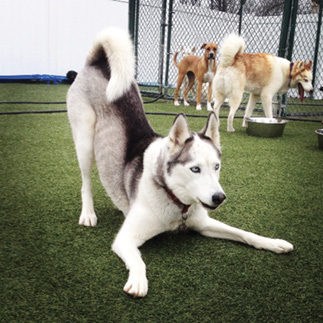
Breakaway Siberians Full Team Roster
Koivu (retired), Fleury, Spezza, Mandy (retired), Chara, Roenick, Cookie, Mikko, Backes, Marleau, Kaiya, Bure, Yashin, Juneau, Balto, Jared (retired), Jax, Nanook, Koda, Obi, Jaz, Karma
Related Posts
Meet the Missouri Veteran Who Makes Gold-Medal Burgers
When Sedalia resident Terry Shull won the 2017 Missouri State Fair Burger Contest, he did it his way. With 17 years of cooking under his belt, Terry has learned to experiment and try new recipes.
Meet Missouri Farmers Kalena and Billy Bruce
Meet some of the farmers raising the beef you eat right here in Missouri, plus, we share a recipe for slow-cooker shredded beef.
Meet The Saddlemaking Cowboy Poet of Missouri
A widower since 2011, Martin still surrounds himself with the stock in the trade of saddle making. His workspace is as much a museum of leather crafting as it is a saddle shop.

